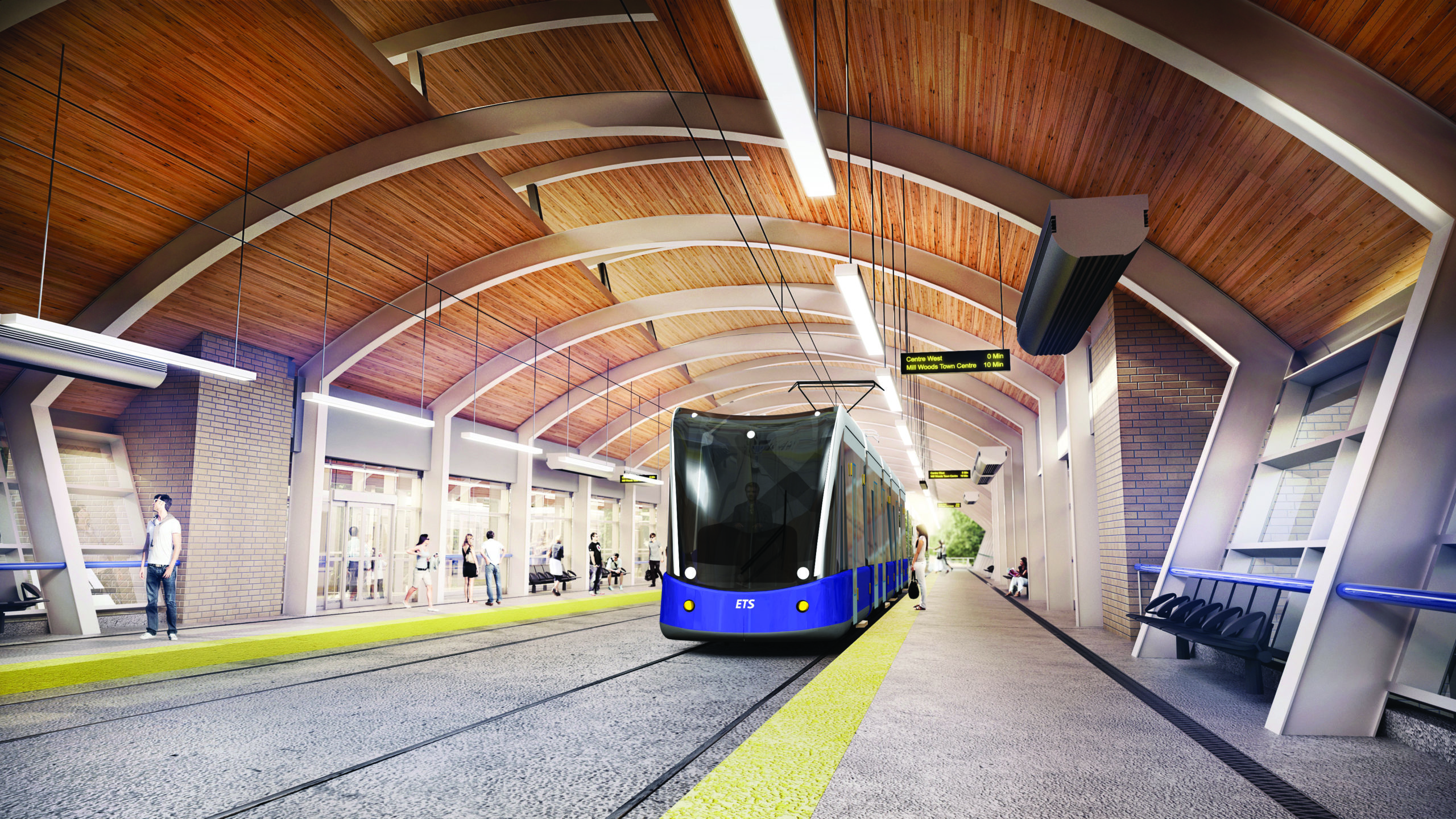Canadians don’t think enough about trains — just, like, generally.
Sure, we understand that the rail network is responsible for the domestic transportation of almost everything we buy, but most people’s direct experiences with freight trains involve shaking their fists at the alternately flashing red lights that tell you you’re going to be another 15 minutes late for work as a stream of graffiti-laden cars chugs leisurely past, only to disappear forever into an urban warehouse block off in the distance.
Passenger trains, meanwhile, are next to non-existent. Canada is the only G7 country to not have any high-speed rail, and our only transcontinental line is about as expensive as flying, takes longer, and is connected to major centres only. It’s not so much a regular method of transportation as a way to kill a summer. Where travel is concerned, Canada is a car-dependent nation.
One well-documented consequence of this is the massive quantities of nitrogen- and carbon-based oxides released into the atmosphere and hydro- sphere, making the oceans more acidic and forming an all-encompassing Archimedes death ray in the sky. Emissions from all forms of transportation account for about one-quarter of Canada’s greenhouse gasses, with personal vehicles being by far the worst offender. The British Department of Business, Energy, and Industrial Strategy conducted a study earlier this year which found that replacing cars with passenger trains would cut transportation emissions per person by about 80 per cent.
However, I am not suggesting (in this instance) that everyone must sacrifice their beloved freedom-granting cars to the climate gods. I am suggesting that organizing our transportation infrastructure around not having to drag two tons of personalized heavy machinery with you whenever you want to leave the house will greatly improve everyone’s quality of life. Helping to cool the planetary oven of our making is just a bonus.
So if you love scrounging for parking, sitting in traffic, paying for gas, and killing the planet, then by all means, accept things as they are.
Let’s take a look at Alberta.
We’ve known for decades that the Edmonton-Calgary corridor is one of the most suitable regions on Earth for a high-speed rail line. Such a train would carry you from downtown Edmonton to downtown Calgary in about an hour, even accounting for a stop in Red Deer — much faster than driving, and flying if you account for airport security times and the fact that you have to drive 15 minutes outside of each city to get to your plane anyway.
But not all trains need to be high-speed. Alberta is also a prime target for regional trains, especially since Greyhound bus services in the province were terminated last year. Both the geography of Alberta and the spatial organization of its cities and towns lend themselves remarkably well to rail infrastructure that could connect everything together, which we already know because we have an existing freight network that the passenger lines could be built on top of. Light rail for inside the city, while being admittedly trickier to build because of all the existing stuff you have to work around, is one of the most effective forms of mass transit that exists. It’s fast, reliable, and has higher capacity than buses.
Travelling by rail in general is almost universally cheaper, safer, and more reliable than by road. About as importantly, though, it’s just a better way to get around. Just imagine not having to give your undivided attention to your surroundings under threat of death (distracted driving is the number one cause of fatal car accidents, according to Transport Canada). You could study, sleep, or work on the elevator pitch of your serial drama about a werewolf who is also an astronaut while you move effortlessly to work or to Banff for the weekend.
By the way, big transportation projects also create a ton of jobs, which seem to be quite important to Albertans. Even if your particular circumstances (understandably) demand you keep your car, you should still want more resources going to train infrastructure. Both regional and municipal mass transit take a huge number of cars off the roads, meaning there’s less traffic for everyone. “Just widen the roads and build more freeways!” you say, to no avail. Thanks to an urban planning phenomenon called “induced demand,” road expansion actually typically leads to more congestion, since it attracts more drivers and commercial buildup tends to happen in high-capacity areas. It’s an “if you build it, they will come,” situation, with “they” in this instance being the nine other cars circling the same block as you looking for the one potentially open parking spot.
So if you love scrounging for parking, sitting in traffic, paying for gas, and killing the planet, then by all means, accept things as they are. If not, you probably want more trains.





0 Comments